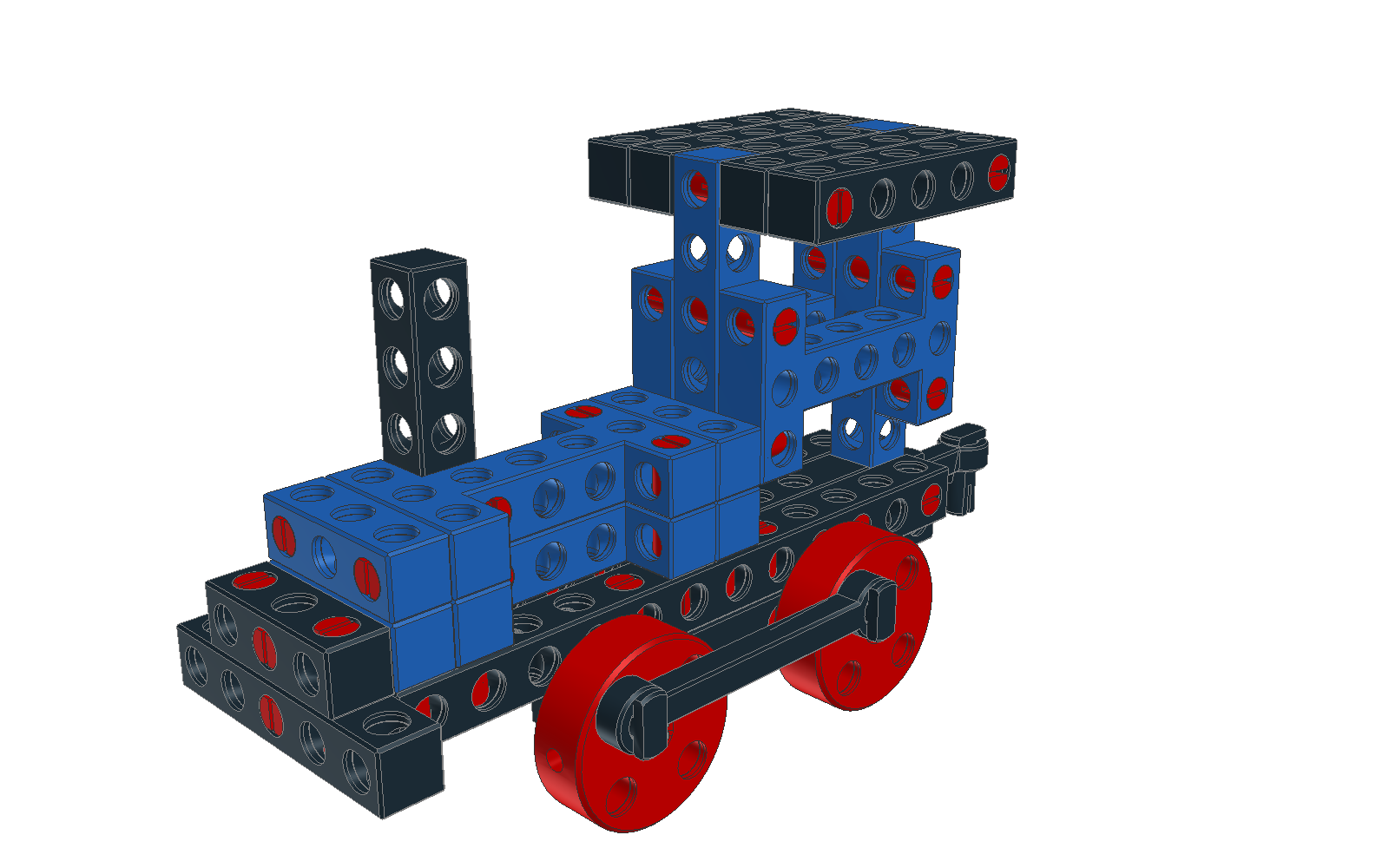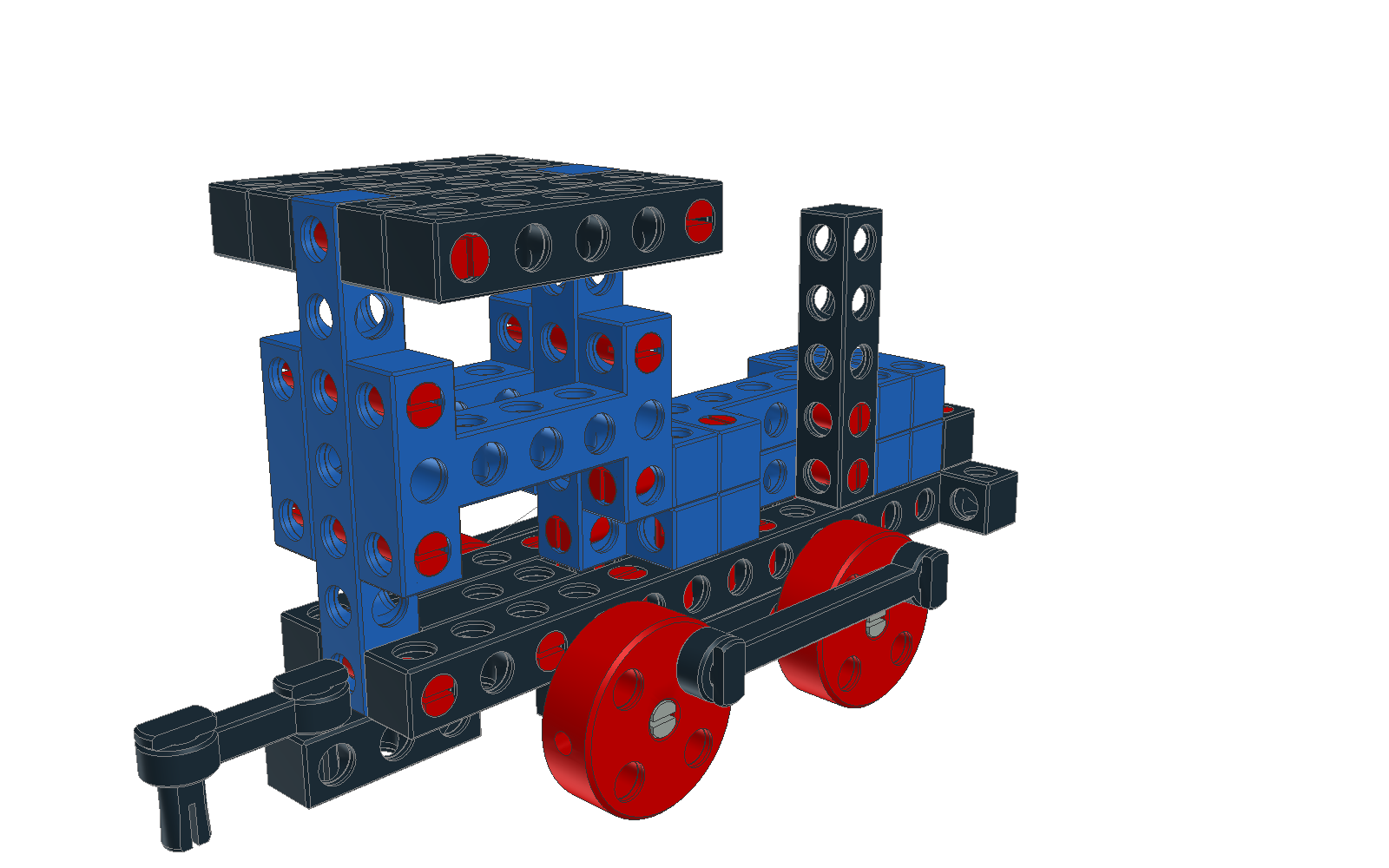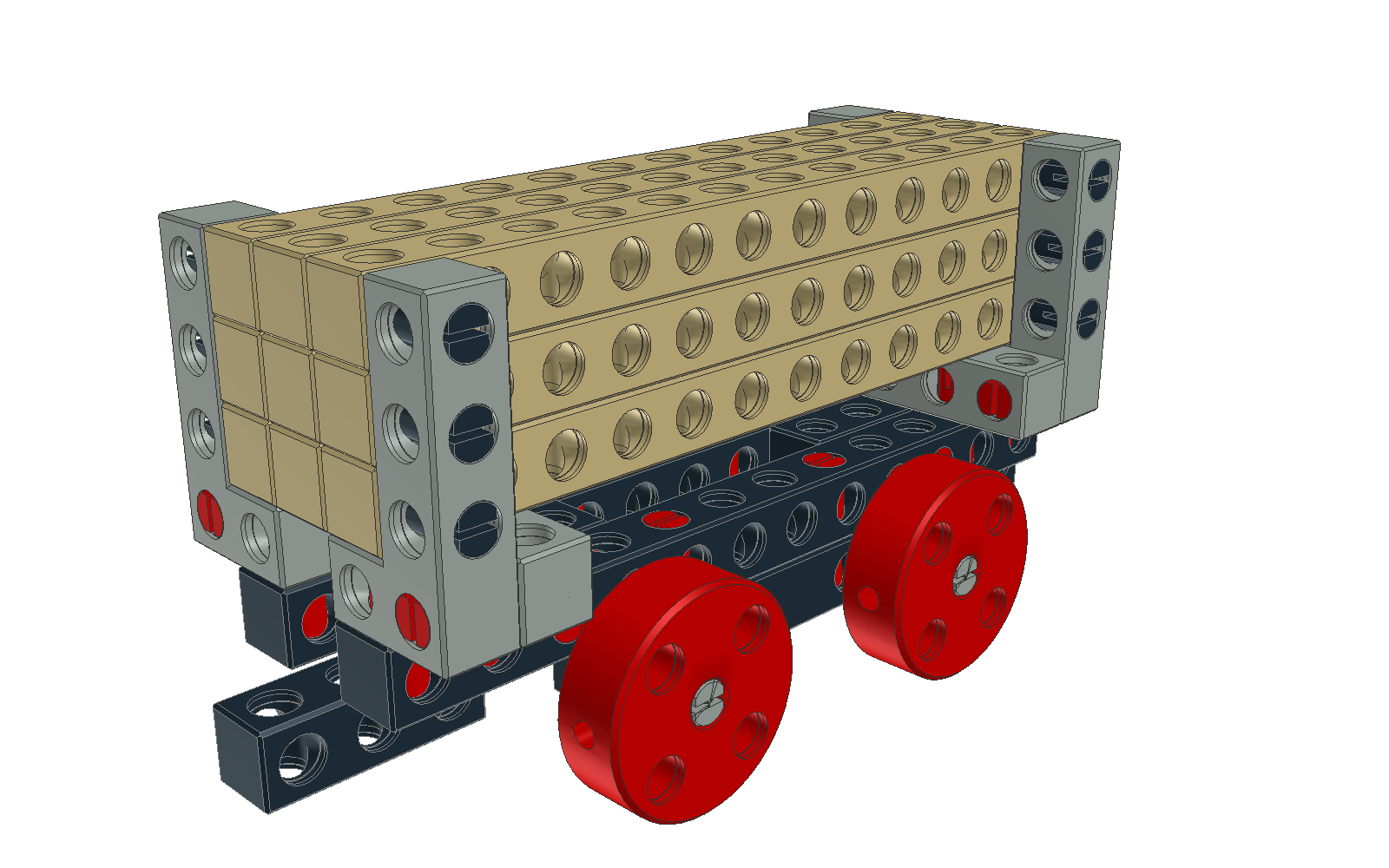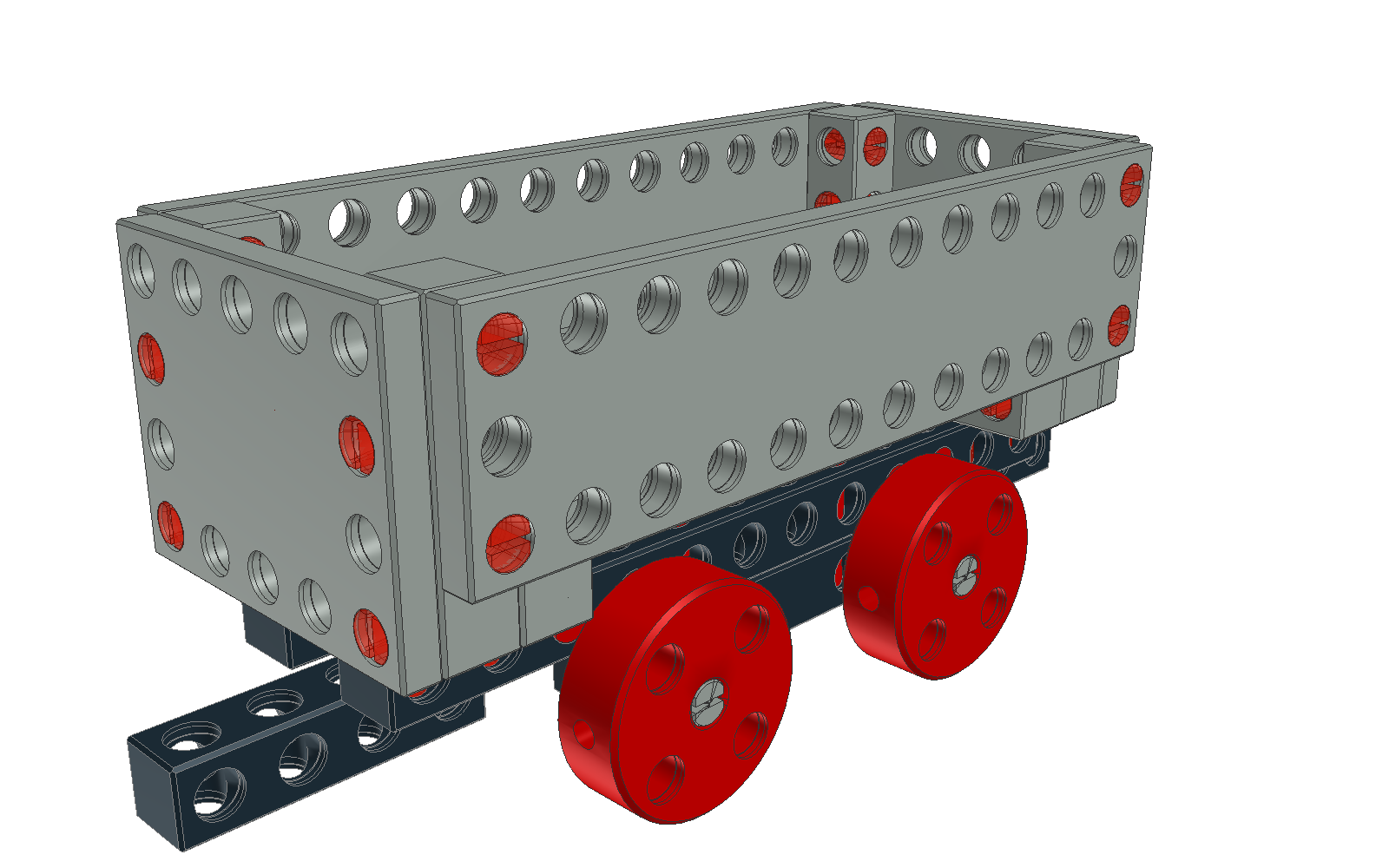Train MINI
We present three building instructions for assembling a train consisting of a locomotive and two types of freight wagons. The entire set consists of 198 parts. As usual, we recommend printing the bricks from PLA and the pins and shafts from PET-G. If you do not own a 3D printer, visit our e-shop, where you can order the locomotive in various color variants, as well as any number of wagons. Alternatively, you can download the parts via the part catalog.

Visualization of the assembled blue MINI locomotive with standard wheels.
Wheels
We recommend deciding in advance whether the train needs special wheels for rails. Our catalog offers both variants, and the wheels can be easily swapped. However, standard wheels are suitable for driving on a regular surface (without rails), although the rail wheels also work.
Plastic Pins
Connecting parts together is done with plastic pins. For a precise connection, we recommend preparing a flat object to align the pins flush with the bricks. The BitBeam Hammer serves this purpose and can also be used for disassembly.
Wheels and Shafts
Wheels and special parts for connecting in moving sections need to be attached loosely to allow space for movement. Wheels should be aligned flush with the ends of the shafts. They will then rotate easily. T-Pins with shafts for attaching connecting rods on wheels or couplers for connecting wagons need to be pulled out just a little. Connecting rods do not necessarily need to be installed on the model.
Keep in mind that the shafts are flat, and the wheel bore profile matches the shafts profile. If necessary, wheels can be secured to shafts using an M3 set screw (grub screw). The hole for it is perpendicular to the flat surface on the shaft.
Locomotive

Visualization of the assembled blue MINI locomotive with standard wheels - rear view.
The locomotive can be printed (ordered) in color combinations. The exemplary blue locomotive was chosen as a reference to the picture book O veselé mašince by Jan Čarak, illustrated by Zdeněk Miler.
Instructions for assembling the locomotive are available in the pdf file locomotive_mini.
Technical Specifications
| Parameter | Value |
|---|---|
| Length | 112 mm |
| Width | 56 mm |
| Height (from rails or surface) | 72 mm |
| Gauge | 32 mm (size 0) |
| Weight | 64g |
| Number of parts | 76 |
Timber Freight Wagon

Visualization of the MINI timber freight wagon with standard wheels.
The timber wagon can, of course, run loaded or empty. If you have several types of brown or wood-looking filament, you can print different types of wood. Filament with added wood works excellently and smells beautiful. If the "logs" were printed in silver, the wagon would suddenly be carrying iron bars instead of wood.
Instructions for assembling the timber freight wagon are available in the pdf file timber_freight_wagon_mini.
Technical Specifications
| Parameter | Value |
|---|---|
| Length | 112 mm |
| Width | 44 mm |
| Height (from rails or surface) | 56 mm |
| Gauge | 32 mm (size 0) |
| Weight (including load) | 64g |
| Number of parts | 59 |
Gravel Freight Wagon

Visualization of the MINI gravel freight wagon with standard wheels.
The gravel wagon can, of course, be filled with any material. You are not limited to just gravel.
Instructions for assembling the gravel freight wagon are available in the pdf file gravel_freight_wagon_mini.
Attention! The instructions work with multiple types of plastic pins. Red pins are available in sizes 2 and 3, and transparent pins in sizes 1.5 and 2.5. The transparent ones are used for attaching solid plates, which have half the thickness.
Technical Specifications
| Parameter | Value |
|---|---|
| Length | 128 mm |
| Width | 48 mm |
| Height (from rails or surface) | 56 mm |
| Gauge | 32 mm (size 0) |
| Weight (without load) | 72g |
| Number of parts | 63 |
Disclaimer
Wagons can be connected in any order and in almost any quantity. The maximum allowable number of wagons or their maximum possible weight has not yet been tested. Similarly, the maximum load-bearing capacity of the wagons or the locomotive has not been tested. The locomotive is fully manually controlled and therefore has no automatic braking systems!
We disclaim responsibility for any damages incurred during assembly or operation. The local railway worker or train driver is fully responsible for them.



